Environ 100 résultats pour « Hallebarde »
-

Hallebarde
La hallebarde est une arme d'hast comportant un fer de hache, et éventuellement une ou plusieurs pointes. Le manche, la hampe, est en bois et assez longue (plus de 2,5 mètres pour certaines). Les militaires maniant cette arme sont des hallebardiers, officiant dans l'unité du même nom.
-
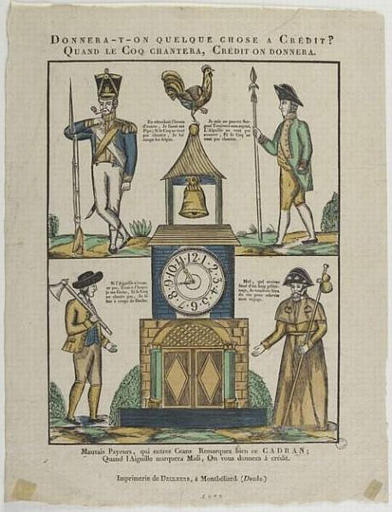
DONNERA T ON QUELQUE CHOSE A CREDIT? / QUAND LE COQ CHANTER…
-
- Domaine(s) :
- Estampe
- Ethnologie
-
- Datation :
- XIXe siècle
-
-

-
- Domaine(s) :
- Costume
- Ethnologie
- Moyen Âge
-
- Désignation :
- enseigne profane ; sifflet
-
- Sujet représenté :
- Banderole
- Hallebarde
-
- Datation :
- XVe siècle
-
-
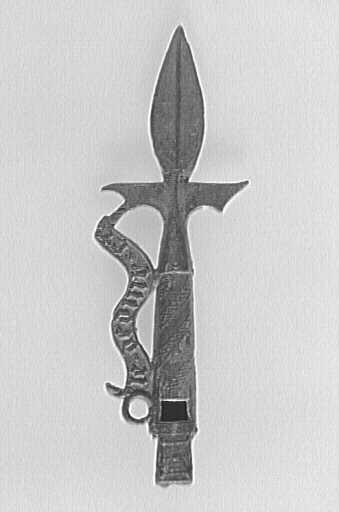
-
- Domaine(s) :
- Costume
- Ethnologie
- Moyen Âge
-
- Désignation :
- enseigne profane ; sifflet
-
- Sujet représenté :
- Banderole
- Hallebarde
-
- Datation :
- XVe siècle
-
-

-
- Artiste(s) :
- Yvonne Jean-Haffen
Malbrough s'en va-t-en guerre (maquette) [titre attribué]
-
- Domaine(s) :
- Dessin
-
- Sujet représenté :
- Bouquet de fleurs
- Canon (artillerie)
- Cheval
- Drapeau
- Hallebarde
- Officier
-
- Datation :
- XXe siècle
-
-

-
- Artiste(s) :
- David Teniers le Jeune
SINGES AU CORPS DE GARDE
-
- Domaine(s) :
- Peinture
-
- Sujet représenté :
- Chat
- Hallebarde
- Jeu de cartes
- Militaire
- Satire
- Singe
-
- Datation :
- XVIIe siècle
-
-

LA PRISE D'ATHENES PAR MINOS
-
- Domaine(s) :
- Peinture
-
- Sujet représenté :
- Cheval
- Gonfanon
- Hallebarde
- Minos
- Ville
- Étendard (bannière)
-
- Datation :
- XVIe siècle
-
-

-
- Artiste(s) :
- Anonyme
LA RESURRECTION DU CHRIST
-
- Domaine(s) :
- Sculpture
-
- Sujet représenté :
- Barbe
- Casque
- Corps humain
- Croix (christianisme)
- Hallebarde
- Militaire
- …
-
- Datation :
- XVIe siècle
-
-
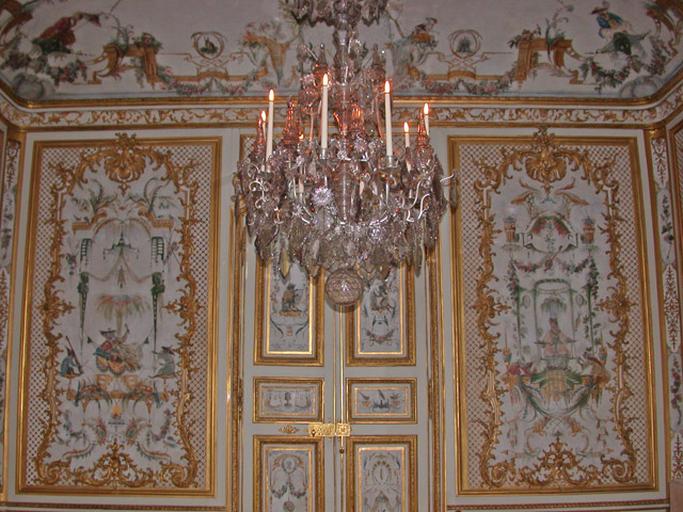
-

-
- Artiste(s) :
- Jacques Courtois (peintre)
CAVALIER CONTRE HALLEBARDIER
-
- Domaine(s) :
- Dessin
-
- Sujet représenté :
- Combat
- Hallebarde
- Militaire
-
- Datation :
- XVIIe siècle
-
-

-
- Artiste(s) :
- Anonyme
La procession de la ligue
-
- Sujet représenté :
- Arquebuse
- Cathédrale
- Foule
- Hallebarde
- Paris
- Procession religieuse
-
- Datation :
- XVIe siècle
-
-

-
- Artiste(s) :
- Martin Van den Bogaert
Pertuisane
-
- Domaine(s) :
- Sculpture
-
- Sujet représenté :
- Hallebarde
-
- Datation :
- XVIIe siècle
-
-
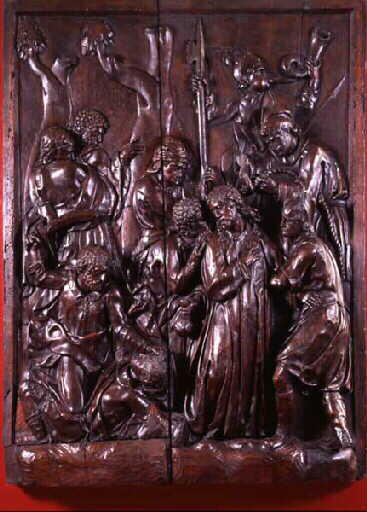
Le Baiser de Judas
-
- Domaine(s) :
- Sculpture
-
- Sujet représenté :
- Baiser
- Baiser de Judas
- Douze Apôtres
- Hallebarde
- Judas Iscariote
- Jésus de Nazareth
-
- Datation :
- XVIIe siècle
- XVIe siècle
-
-

Exposition Universelle de 1900. VIEUX PARIS (titre inscrit)
-
- Domaine(s) :
- Estampe
- Ethnologie
-
- Sujet représenté :
- Emblème
- Hallebarde
- Hôtel particulier
- Militaire
- Paris
- XVIe siècle
-
- Datation :
- XXe siècle
-
-

Exposition Universelle de 1900. VIEUX PARIS (titre inscrit)
-
- Domaine(s) :
- Estampe
- Ethnologie
-
- Sujet représenté :
- Armure (équipement)
- Chien
- Fille
- Hallebarde
- Hôtel particulier
- Machine
- …
-
- Datation :
- XXe siècle
-
-

Le Pied de Mouton, mélodrame en 3 actes Théâtre Gaité (titr…
-
- Domaine(s) :
- Estampe
- Ethnologie
-
- Sujet représenté :
- Chaise
- Chute (accident)
- Danse traditionnelle
- Déguisement
- Femme
- Fenêtre
- …
-
- Datation :
- XIXe siècle
-
-

LE JEU DE NAIN JAUNE. (titre inscrit)
-
- Domaine(s) :
- Estampe
- Ethnologie
-
- Sujet représenté :
- Carte à jouer
- Couronne (attribut)
- Domesticité
- Fleur
- Hallebarde
- Nanisme
-
- Datation :
- XIXe siècle
-
-

PLANCHE DE SAINTS. (titre factice)
-
- Domaine(s) :
- Estampe
- Ethnologie
-
- Sujet représenté :
- André (apôtre)
- Calice (liturgie)
- Clef (serrurerie)
- Coq
- Hallebarde
- Jacques d'Alphée
- …
-
-

LE PETIT TOUR A PARIS DE MR GOBINEAU. (titre inscrit)
-
- Domaine(s) :
- Estampe
- Ethnologie
-
- Sujet représenté :
- Baïonnette (arme)
- Chambre à coucher
- Chapeau
- Chute (accident)
- Couple (droit et sociologie)
- Fauteuil
- …
-
- Datation :
- XIXe siècle
-
-

HISTOIRE DE GUILLAUME-TELL / LE LIBERATEUR DE LA SUISSE. (t…
-
- Domaine(s) :
- Estampe
- Ethnologie
-
- Sujet représenté :
- Arbalète (arme)
- Barque
- Blessure
- Femme
- Flèche (arme)
- Garçon
- …
-
- Datation :
- XIXe siècle
-
-

PROCESSION DE Ste ANNE D'AURAY (titre inscrit)
-
- Domaine(s) :
- Estampe
- Ethnologie
-
- Datation :
- XIXe siècle
-
-

La Descente de Croix
-
- Domaine(s) :
- Dessin
-
- Sujet représenté :
- Armure (équipement)
- Descente de croix
- Hallebarde
- Militaire
- Renaissance
-
- Datation :
- XVIe siècle
-
-

-
- Artiste(s) :
- Giulio Campi
- Odilon Redon
Homme debout, tourné vers la gauche tenant une hallebarde
-
- Domaine(s) :
- Dessin
-
- Sujet représenté :
- Hallebarde
- Homme
-
- Datation :
- XIXe siècle
-
-

Saint Matthieu
-
- Domaine(s) :
- Estampe
-
- Sujet représenté :
- Hallebarde
- Matthieu (apôtre)
-
- Datation :
- XVe siècle
-
-

Saint Matthias
-
- Domaine(s) :
- Estampe
-
- Sujet représenté :
- Douze Apôtres
- Hallebarde
- Livre (document)
- Matthias (apôtre)
-
- Datation :
- XVe siècle
-
-

Un chevalier portant une hallebarde et un bouclier se tient…
-
- Domaine(s) :
- Estampe
-
- Sujet représenté :
- Arme
- Bouclier (arme)
- Casque
- Chevalerie
- Hallebarde
- Homme
- …
-
- Datation :
- XIXe siècle
-
-

-
- Artiste(s) :
- Anonyme
Tenture de la Vie Seigneuriale : Le Départ
-
- Domaine(s) :
- Moyen Âge
- Tapisserie
-
- Sujet représenté :
- Arme
- Chien
- Faucon
- Hallebarde
- Homme
-
- Datation :
- XVIe siècle
- XVe siècle
-
-

-
- Artiste(s) :
- Anonyme
Saint Matthias, debout, tenant un livre et une hallebarde
-
- Domaine(s) :
- Dessin
-
- Sujet représenté :
- Hallebarde
- Livre (document)
- Matthias (apôtre)
-
- Datation :
- XVIe siècle
-
-
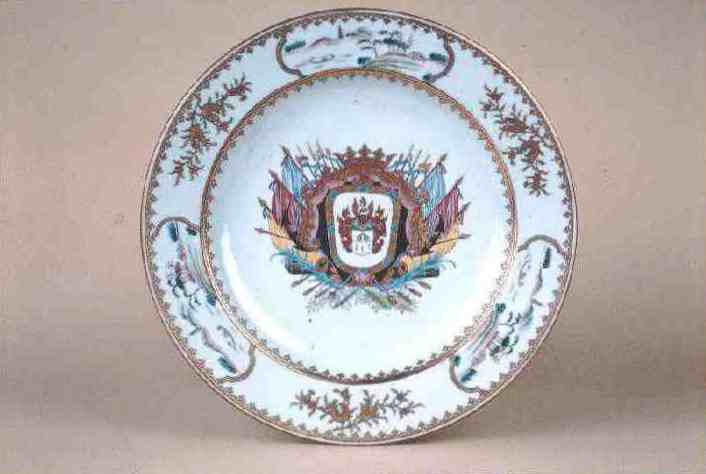
Armoiries de la famille Verhuell
-
- Domaine(s) :
- Asie de l'Est
- Céramique
- Ethnologie
- Héraldique
-
- Sujet représenté :
- Berge
- Bouddha
- Branche (botanique)
- Canon (artillerie)
- Chine
- Citron
- …
-
- Datation :
- XVIIIe siècle
- Dynastie Qing
-
-

-
- Artiste(s) :
- Anonyme
La Bénédiction nuptiale
-
- Domaine(s) :
- Dessin
-
- Sujet représenté :
- Autel (religion)
- Bénédiction
- Femme
- Hallebarde
- Homme
- Mariage
-
- Datation :
- XIXe siècle
-

